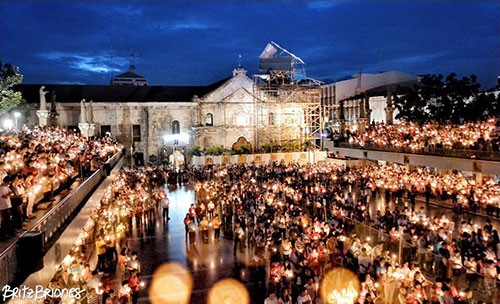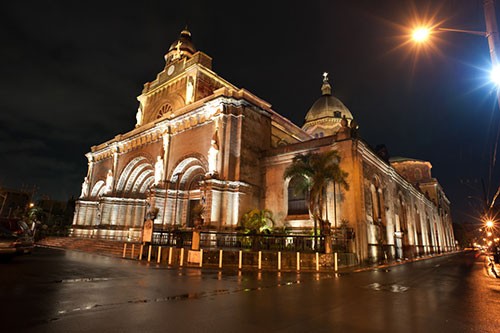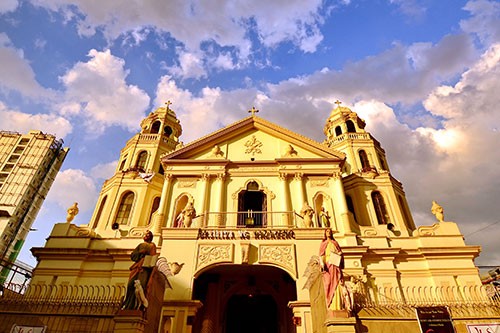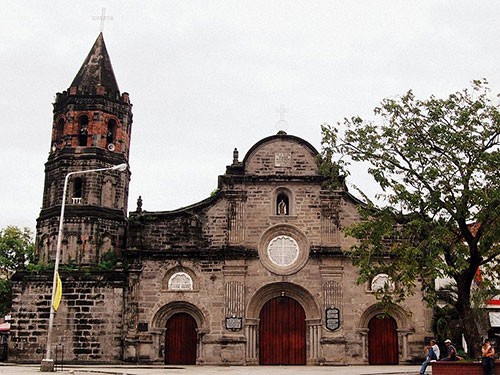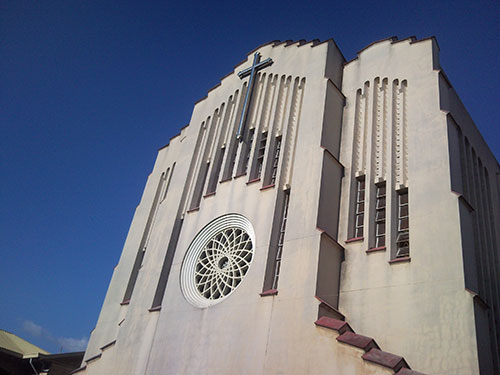Holy Week in the Philippines is an occasion when Filipino families, friends, and tourists alike make pilgrimage visits to oftentimes centuries-old Philippine churches.
The majority of the Roman Catholic faithful of the country’s predominant religion usually have their Visita Iglesia rounds on Maundy Thursday, visiting seven or more churches while reciting the Holy Rosary and reflecting on the Stations of the Cross. Others choose to spread their church stops throughout the week-long reflection on the life and death of Jesus Christ.
The most visited churches in the country during Lent were built 400 years ago and standout not only as testaments to the Filipino religiosity – the centuries-old churches are also remarkable architectural monuments and witnesses to historical junctures in the Philippines.
Here are the ten oldest churches in the country where Catholics and tourists visit during the Lenten season.
- Santo Niño Church
Santo Niño Church [by Britz Briones via Facebook] The Basilica Minore del Santo Niño de Cebu or Minor Basilica of the Holy Child is considered as the oldest church in the country where the Sto. Nino image brought by the Legaspi-Urdaneta Spanish expedition remains enshrined to this day. The first structure was a convent made of nipa and wood, built in 1565 in Cebu. After fires gutted the convent, the church was rebuilt in stone by 1739. The current stone structure of the Santo Niño Church is a blending of Romanesque, Muslim, and neo-classical features. The Bell tower has two blind and open windows alternating in shape, ending up in triangular pinnacles with a circular disc crowned by balusters and a bulbous dome of Muslim influence. The Center section is the focus of attention with its arched main entrance balanced by the side rectangular corners. A double-edged triangular pediment crowns the facade.
- Manila Cathedral
Manila Cathedral [via Manila Cathedral Rector’s desk] More formally known as the Manila Metropolitan Cathedral-Basilica, the church is the Minor Basilica of the Immaculate Conception and is considered as the “Mother of all Churches and Cathedrals in the Philippines”. Located inside the Walled City of Intramuros, Manila, the cathedral was first built of nipa, bamboo, and wood in 1571 and administered the religious affairs of Manila. Damaged by typhoons, earthquakes, fires, and the ravages of wartime Philippines, the current cathedral is actually the 8th Cathedral after having been reconstructed and renovated many times in stone and mortar. The Manila Cathedral now was designed in the postwar period’s modernist trend in architecture mixed with revival and renaissance styles, with an appearance similar to its former architecture. The Neo-Romanesque facade, Byzantine motifs, bronze doors, pineapple finials, and marble finish complete the artistic look.
- San Agustin Church
Located in the historic Walled City of Intramuros, Iglesia de la Inmaculada Concepción de María de San Agustín was first built of nipa and bamboo in 1571. During the invasion of the Chinese pirates in Manila, the burning of the city did not spare the church which resulted to its first reconstruction the year after. It used wooden materials to rebuild the church but unfortunately, was destroyed by a fire in 1583. San Agustin Church was reconstructed using adobe stones in 1607. It is the only colonial church that remained standing in the Walled City and survivedWorld War II without having to change its vaulting. The San Agustin Church is patterned after some of the magnificent temples built by the Augustinians in Mexico. Its present edifice was built in 1587, and completed, together with the monastery, in 1604. The atmosphere is medieval since “both church and monastery symbolize the majesty and equilibrium of a Spanish golden era.”
- Quiapo Church
Quiapo Church [by Allan Jay Quesada via Wikimedia] In 1586 the first church in Quiapo, the Minor Basilica of the Black Nazarene, also known as St. John the Baptist Parish, was built of nipa and bamboo but later on, was destroyed by fire. During its reconstruction, it used stone for its structures in a Mexican Baroque style. The church was partially damaged by earthquakes in 1928 and was left in ruins. In 1984, it was rebuilt again through fund raising and expanded to its present structure to accommodate thousands of devotees of the Black Nazarene. Quiapo Church is considered as one of the miraculous and most popular churches in the country.
- Albay Cathedral
San Gregorio Magno Cathedral, also known as Albay Cathedral, was first established as a wooden chapel in the 1580s in Albay, Legazpi City. During World War II, the cathedral was destroyed. It was reconstructed in 1951. San Gregorio Magno Cathedral is one of the famous visited churches in the Old Albay District and serves as the last station in one of the processions in the region during Good Friday.
- The Shrine of Our Lady of the Rosary of Manaoag
Before it became a shrine, Santa Monica Chapel which is Manaoag’s original name, first introduced the icon of Our Lady of the Rosary in 1600 in Pangasinan. In 1614, the church was administered by the Dominicans who transferred the church to its present location on a hill due to the threat of the Igorot tribes. Today, devotees across the globe visit the Shrine of Our Lady of the Rosary of Manaoag to pray for health, safe trip and better fortune. It is one of the miraculous churches in the country.
- Barasoain Church
Barosoain Church [by Mondo Marcos via Wikimedia] The Our Lady of Mt. Carmel Parish church was built in 1630 in Malolos, Bulacan. During the Philippine Revolution, the church was burned and was rebuilt the year after. Touted as the most important religious building in the Philippines, Barasoain Church has witnessed three major events in the Philippines – the assembly of the First Philippine Congress, the birth of the First Philippine Republic and the planning of the Malolos Constitution.
- Baclayon Church
The Church of Our Lady of Immaculate Concepcion is located in Baclayon, Bohol, the church was established in 1717 by the Jesuits and the structure completed as the present coral stone church in 1727. Baclayon Church was declared as a National Cultural Treasure by the National Museum of the Philippines, and a National Historical Landmark by the National Historical Commission of the Philippines. Baclayon Church is considered as the “best-preserved Jesuit-built” church in Bohol.
- Miag-ao Church
In 1797, Spanish Augustinian missionaries completed building the Sto. Thomas de Villanueva Church in Miag-ao, Iloilo. The church was damaged by fire twice – first, during the Spanish Revolution and second, during the Philippine-American war. It remains standing despite typhoons and earthquakes. It is listed in UNESCO World Heritage Site as one of the Baroque Churches of the Philippines. The construction of the Miag-ao Church is in the Baroque Romanesque architectural style. Its ochre color is due to the materials used in constructing the church, adobe, egg, coral and limestone. Sto. Thomas de Villanueva Church today is one of the favorite historical churches in the country which devotees visit during Holy week.
- Baclaran Church
Baclaran Church [by Verite Ame via Wikimedia] The National Shrine of Our Mother of Perpetual Help is more popularly known as Baclaran Church. It was founded in 1906 by Redemptorist priests. The church was re-established thrice with Modern Romanesque style in the same location. The completion of the church’s construction was in December 1952. The National Shrine of Our Mother of Perpetual Help is considered as one of the miraculous church in the country and is known for its Wednesdays Perpetual Novena. It is never closed, its doors open 24 hours daily with permission from Rome.
Churches to visit during the Holy week are a personal choice. Some devotees enjoy a long trip while others choose the churches nearest to them. But with these historic and beautiful churches in the country, why not visit them this Lenten season and appreciate their contribution to our culture and identity?






